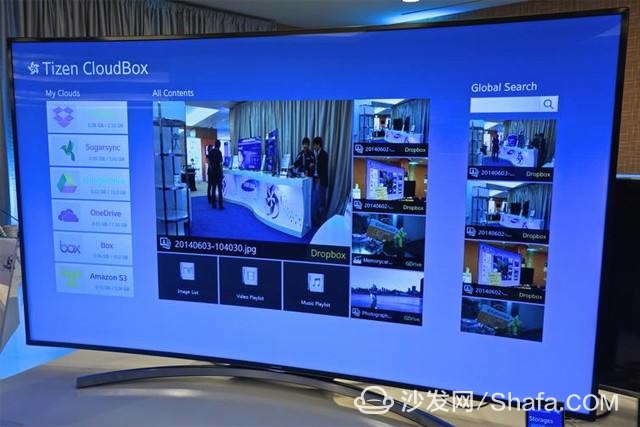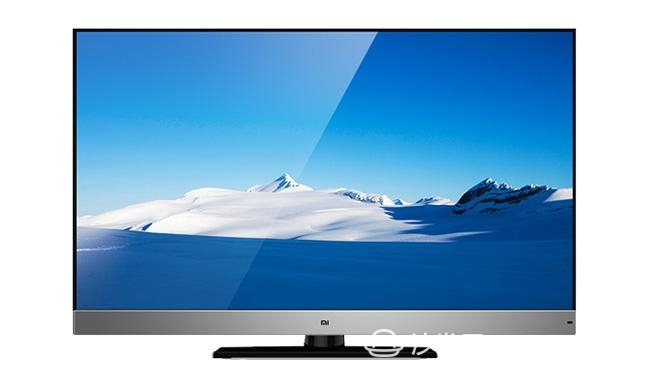Since the Internet brands entered the color TV industry, they have experienced the era of 1.0 represented by rough development and price war. Today, in the environment where the upstream LCD panel prices have risen dramatically and the television industry has suffered serious losses, the Internet brand TV has entered the 2.0 era—abandoning the price war, shifting from price competition to value competition, and focusing on products, technologies, content, services, etc. It provides consumers with high quality protection.
The author believes that in the 2.0 era, Internet brands should systematically sort out the color TV industry chain, improve quality and technology from the Internet TV-related industry chain, and break through homogenous competition with the advantages of multi-product strategies and full matrix industrial chain.

The era of 1.0 makes Internet TV brands blindfolded but deadlocked
In the 1.0 era of Internet TV brand, LeTV was a representative enterprise. LeTV as the bottomless price war to open up the market situation, rapid increase in sales, led some Internet brands together to the low-cost, low-end Internet TV market cake bigger. However, the blinding result is that LeTV has suffered serious losses and the capital chain is in a tight situation.
According to LeTV's 2016 financial report, Leshizhixin Electronic Technology (Tianjin) Co., Ltd., which is responsible for LeTV's super-television operation, had a net loss of 636 million yuan in 2016, and the LeTV eco-business model suffered great setbacks. From the second half of last year, LeTV Super TV continued to increase its price, and its sales growth rate declined significantly.
According to AVC's omni-channel push total data, in the first quarter of 2017, the market share of Internet TV brands decreased by 4.1% compared with the same period of last year, accounting for only 10.8%. The above data reflects that the Internet TV brand 1.0 era has reached an impasse.
In the long run, price competition will not benefit the industry, companies and even consumers. Color industry transformation and upgrading and sustainable development need to maintain value competition. In the severe test of the rising price of core components and raw materials such as the upstream LCD panel and the rising labor costs, how can Internet TV brand price wars and homogenous competition break through? Has become the focus of attention throughout the industry.

The 2.0 era makes the Internet TV brand competition threshold significantly improved
After abandoning the price war, the Internet brand television camp entered the 2.0 era, and product upgrades are the trend. This requires the Internet TV brand to persist in the construction and accumulation of products, technologies, quality, and channels.
As traditional TV companies have launched Internet brands, for example, Skyworth has pushed "Cool", Konka has pushed "KKTV", TCL has pushed "Thunderbird", and new-entry Internet brands like Mango TV have joined the war. Internet TV brand camps The overall living environment is more difficult, and the threshold for industry competition is being greatly improved.
With the current slowdown in economic growth, sluggish real estate sales, the rise of middle-class consumers, and the popularity of audiovisual terminals, the demand for color TVs has entered the quality improvement phase from the quantitative growth stage. The upgrading of consumer structure has become the most important issue faced by the color TV industry and is reflected in the following three aspects.
The first is the upgrade of the size, the upgrade of the living room TV screen from 40, 42 inches to 55 inches and above, and the upgrade of the bedroom TV screen from 32 inches to 40 inches and above. For example, on May 17th, 2017, the new A-series of the Micro Whale TV series was 55 inches and 65 inches; on May 18, 2017, Xiaomi released the new flagship TV of the year – three sizes of the Xiaomi TV 4 series. 49-inch, 55-inch, and 65-inch; May 26th, 2016, 3 new “Hwan Watch†series products, namely 55 inches, were released on the May 2nd anniversary event with the theme “Extraordinary self-presentationâ€. The X55Q, the 65-inch K65, and the 98-inch X98 also reflect the trend of television size upgrades.
The second is the functional upgrade. TVs are being upgraded to artificial intelligence TVs. Full HD products are being upgraded to Ultra HD products. Artificial intelligence has become the key word for new 2017 TV sets. For example, Xiaomi’s newly released 4A TV series and 4 series, Changhong’s new Q5N series, TCL’s new XESS X2 and X3, and Lenovo's newly released 17TV65i3 will Artificial intelligence technology is one of the main selling points. And yet, Kan Shang is fully upgrading the CAN UI smart TV operating system, introducing an upgraded new generation of artificial intelligence TV operating system - CAN UI 2.0, and using "an obedient TV" as a connection point with consumers in the new era. .
The third is high-end demand. With the rise of urban middle class and affluent sectors, OLED wallpaper TV, ultra-short-focus laser projection TVs with sizes of 100 inches and above, and TVs that create cinematic surround sound effects have become new consumer trends.
In the 2.0 era, the threshold for Internet TV brand competition has been significantly improved, and the survival of the fittest has been accelerated. Internet brands that are lower than the production cost pricing are declining. The brand that focuses on product innovation and technology research and development is setting off new forces.

Internet TV brands can differentiate themselves by taking advantage of multi-product strategies and full-matrix industrial chain
Faced with the entanglement of traditional color TV companies and the slander inside Internet TV brand camps, Internet brands must be able to break through the homogenous competition in the 2.0 era with the advantages of multi-product strategy and full matrix industrial chain.
At present, most of the Internet TV brand products such as Storm and Lenovo 17TV have a relatively single product structure. The so-called new product of the year is only one or two TV sets. It is difficult to cover a large range of user groups, and there is no synergy between a small number of product lines. .
It is absolutely not a "single soldier" that can really form a strong competitive force in the color TV market. It must be a "group army" operation. For example, to see the newly released trend-grade products, the series X55Q/K65/X98, the portable home/office smart projector X1/X1s, the handheld smart projector iCAN theater P1/P1s, the laser cinema S2, and the connected smart life Various new products, such as the terminal's all-purpose remote controller, can form a multi-product strategy to meet the needs of different users.
Based on the multi-product strategy, the advantages of the full-matrix industrial chain can truly open up a differentiated breakthrough path for Internet TV brands.
In the 2.0 era, the elimination of the TV industry has become increasingly fierce. In the future, Internet TV is an era of quality. It is a comprehensive display of license content, audio-visual technology, control systems, and channels. Internet brand television In the competition with traditional color TV companies that specialize in hardware manufacturing, creating a “soft and hard integrated service platform†is the future direction of development.
However, not every Internet TV brand can achieve this goal.
For example, internet brands such as Leshi and Storm have flaws in their business layout, and they lack the licensing resources such as the “Internet Television Integrated Broadcasting and Control Licenceâ€. This is in line with China’s International Broadcasting and Television Network Station (CIBN) and is backed by Hunan Broadcasting and Television Station. Compared to Internet brands such as Love Mango TV, there are certain disadvantages.
Especially in the period of entering the strategic system, it is still watching TV. For the first time, the industry has established a strategic model of the advantages of the full matrix industrial chain. The company has made breakthroughs in eight key areas such as licenses, hardware, operating systems, content, software, applications, services, and channels. It has become the second-rate Internet TV brand with systematic and systematic processes.
The era of Internet TV brand 1.0 is mainly to sell products, fight prices, and experience lightly; in the 2.0 era, it is to provide consumers with quality services, innovative products and smart lifestyles. The aim is to make innovation and life closer. At the 2nd Anniversary celebrations, through the multi-product strategy, the advantages of the full-matrix industrial chain were released, and the corporate image of the unique Internet TV soft-soft integrated service platform in the industry was displayed, leading the Internet. TV brand camps accelerated toward the 2.0 era.
Smart TV/box information can focus on smart TV information network sofa butler (http://), China's influential TV box and smart TV website, providing information, communication, etc. on TV boxes, smart TVs, smart TV software, etc. Answering questions.
Forging is one of the two components of forging (forging and stamping), which is a processing method that makes use of forging machinery to exert pressure on metal billets and produce plastic deformation to obtain forgings with certain mechanical properties, certain shape and size. Through forging can eliminate the defects such as loose cast state produced in the smelting process of metal, optimize the microstructure structure, at the same time because of the preservation of a complete metal streamline, the mechanical properties of the forging is generally better than the same material castings. Forgings are mostly used for the important parts with high load and severe working conditions in the relevant machinery, except for the simple plate, profile or welding parts that can be rolled.
Hot Forging,Forging Mine Chain Link,Custom Made Forging,Alloy Steel Forging Mine Chain
Tianhui Machine Co.,Ltd , https://www.thcastings.com